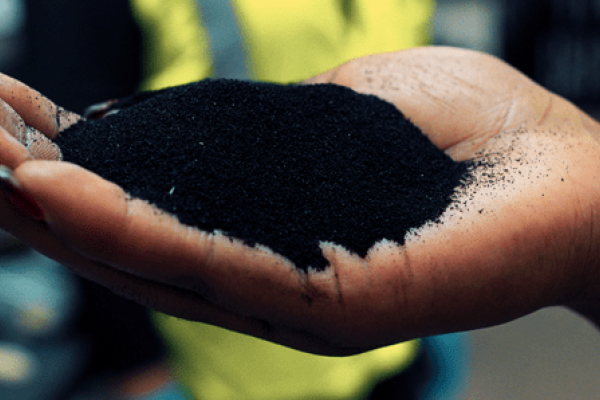What can we help you find?
By Topic
Quick Links
USTMA members strive to increase the use of sustainable materials in the tires we manufacture
As global leaders in manufacturing, USTMA member companies embrace a shared responsibility of helping to achieve a more sustainable society. With this commitment, USTMA members continually look for new ways to improve both their products and operations and their understanding of the impact of tires on the environment. At the same time, USTMA members are committed to producing the safest, most durable and high-performing tires possible.
What's In Our Products?
Tires are made from a complex blend of rubber compounds and materials, designed to withstand a wide range of demanding conditions. The process of selecting and combining these materials, known as compounding, is intricate and highly specialized.
Each tire component—whether tread, sidewall, structural plies, or stabilizing bead—requires a specific compound tailored to its role within the tire, balancing safety and performance. USTMA members embrace the challenge of enhancing sustainability without compromising these critical attributes, turning it into an opportunity for innovation.
How A Tire Is Made
Sustainable Materials in Tire Manufacturing
USTMA Members strive to increase the use of sustainable materials in tire manufacturing and have invested significant resources in research and development . Some examples include dandelion and guayale, a shrub native the American Southwest, as a source of domestic natural rubber.
Tire and Road Wear Particles
The grip between a tire and the road is crucial for safety and performance, but this friction also causes tire and road surface wear, creating tiny particles known as tire and road wear particles (TRWP). These particles are a blend of tire tread and road pavement material.
Since 2005, USTMA and its members have backed peer-reviewed studies on tire and road wear particles through the Tire Industry Project (TIP) under the World Business Council for Sustainable Development (WBCSD). TIP has explored the potential environmental and health impacts of these particles. Research shows that toxicity outcomes vary based on factors like test material, species, exposure levels, and study methods.
USTMA continues to support further research using TIP's advanced methodologies to better understand any potential risks of TRWP and advocates for tire design improvements, consumer efforts to reduce tire wear, and green infrastructure to minimize TRWP generation and its impact on stormwater runoff.
6PPD and Tire Manufacturing
USTMA members use a chemical additive called 6PPD to help tires resist degradation and cracking, which is vital for driver and passenger safety. In December 2020, a report published by researchers at the University of Washington and the Washington Stormwater Center (Tian et al.) identified a 6PPD transformation product they called 6PPD-Quinone and concluded that it is toxic to coho salmon and may be causing urban runoff mortality syndrome in this fish species. Earlier studies of 6PPD transformation products had not identified this substance.
USTMA and its members are committed to collaborating with researchers and regulators to better understand these distinct compounds (6PPD and 6PPD-Quinone), resolve knowledge gaps and determine appropriate steps to ensure continued driving and environmental safety.
Zinc and Tires
The tire industry uses zinc to produce safe and durable tires. While scientific studies have concluded that current uses of zinc have low potential for environmental effects, USTMA and its members remain committed to collaborating with researchers and regulators to understand and address any potential impacts of zinc on the environment.
Zinc plays a crucial role as an activator in the chemical reaction process known as vulcanization, which transforms rubber from a soft gum into a solid article. Tire manufacturers utilize zinc or zinc oxide because it activates and promotes the highest number of crosslinks in the rubber chain imparting strength, stability and other useful properties in a finished tire. In short, zinc is the critical ingredient that allows a tire to perform safely. Without zinc, rubber tires cannot be manufactured.






